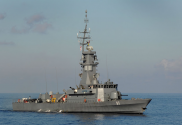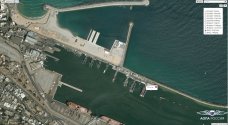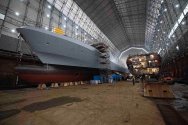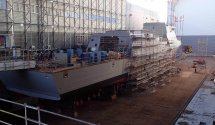The ship is incredibly well-armed for its size. It almost sounds like an exaggeration. The ship's weight is 1900 tons yet the specs are these:
75 man crew
30 day endurance
2500-4000 nautical miles range (changes from resource to resource)
26 knot top speed
4 faced AESA with a range of 250+ km against fighters.
EO/IR
EW, and decoy launchers
SATCOM
Datalink
Integrated combat system
Radar, infrared, magnetic, acoustic signature reduction
Hangar and helipad for a single 11-ton class helicopter.
76 mm gun with 120 rpm (AHEAD and guided munition capable)
2 x 25 mm remotely manned guns
32 VLS for Barak 8 SAM (100 km range)
40 smaller VLS for C-Dome (naval iron dome, 17 km range)
16 Gabriel V AShM (280 km range, 220 kg warhead, subsonic)
2 x 3 tube 324 mm torpedo launchers for Mk. 54 torpedo
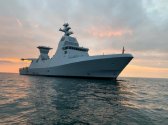
What are your opinions on this? Do you think we will see a ship this densely packed from China?
75 man crew
30 day endurance
2500-4000 nautical miles range (changes from resource to resource)
26 knot top speed
4 faced AESA with a range of 250+ km against fighters.
EO/IR
EW, and decoy launchers
SATCOM
Datalink
Integrated combat system
Radar, infrared, magnetic, acoustic signature reduction
Hangar and helipad for a single 11-ton class helicopter.
76 mm gun with 120 rpm (AHEAD and guided munition capable)
2 x 25 mm remotely manned guns
32 VLS for Barak 8 SAM (100 km range)
40 smaller VLS for C-Dome (naval iron dome, 17 km range)
16 Gabriel V AShM (280 km range, 220 kg warhead, subsonic)
2 x 3 tube 324 mm torpedo launchers for Mk. 54 torpedo

What are your opinions on this? Do you think we will see a ship this densely packed from China?

